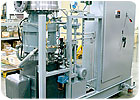
Figure 1. The 275 kW Microsteam® pressure-to-power system, paired its with control and utility interconnect panel.
Facilities making or taking high-pressure steam can now install a simple off-the-shelf system for harvesting electricity from their steam rooms. In 2002, this column featured a then-new system for generating on-site power wherever steam pressure needed to be reduced for final use. The Microsteam® turbine system from Carrier Commercial Service (CCS), is designed to use steam from high-pressure boilers or a utility district heating system to produce up to 275 kW of power, while acting in parallel with an existing pressure reducing valve (PRV). PRVs are common in such facilities and the pressure drop (necessary to allow steam to be used at lower pressures) slightly reduces the energy content of the steam.
Where Does This Option Make Sense?
While such turbo-expander systems are not new, and have been successfully engineered into hundreds of industrial and campus-style facilities for decades, the Microsteam® unit is a pre-packaged, skid-mounted system (Figure 1) designed to minimize the need for customized engineering. Since it uses no extra fuel and has no emissions, it is being promoted as a clean source of on-site power for meeting some of the electrical needs of large facilities (e.g., those using over 6,000 lb/hr of steam, roughly at least 200,000 sq ft). The system can run on steam flows as low as 2,000 lb/hr, giving it the flexibility to produce power even when steam loads vary widely.Utility district steam systems exist in several dozen older U.S. cities, including New York, Philadelphia, San Francisco, Seattle, Cleveland, St. Louis, Boston, and Washington. Roughly 10,000 buildings presently receive or make high pressure steam, including those in industrial parks, universities, medical centers, prisons, and other large institutions, as well as commercial and apartment buildings served by steam-based district systems. Where power prices have been rising rapidly, many facilities are looking for any cost-effective option to cut peak power use or produce power on-site.
How Does This System Compare To Others?
Most similar systems that create power from steam pressure reduction involve larger equipment and greater steam flow to produce the same kW. The Microsteam system includes the turbine, speed reduction gear, and a 460V induction generator. Designed to fit into tight spaces, it’s about as big as a phone booth, not including PLC control panel and utility interconnect panel (which can also be provided on a single skid for more spacious locations). Installed cost per kW may be higher for the Microsteam system, but its greater output (for the same steam flow) makes it ideal for customers paying high peak demand charges and/or where government or utility financial incentives are provided for demand reductions. Payback periods in such areas range from 2 to 4 years.Ernest J. Biron, P.E., Carrier’s New York sales manager and product co-developer, pointed out that the system “can also be packaged with Carrier’s low-pressure absorption chillers and electrical VFD chillers to create an efficient cooling combined heat and power hybrid plant that has significant customer benefits.”
Nine Units and Counting
In New York, the first unit has been running in a commercial building since 2003, while a second was installed in 2006 at the new 7 World Trade Center, which contributed to that building’s LEED® Gold Rating (Core and Shell). Another is running at a Manhattan utility steam plant, and a fourth will soon be installed in another commercial facility in the city. Connecticut has one installed with two more on the way, while two are running at a large New Jersey university. Carrier sees a potentially “huge marketplace.”Others are examining similar technologies for harvesting steam energy to produce on-site power, so watch for some competition down the road. With rising electric rates, demands for ‘greener’ buildings, and the potential for Installed Capacity and Renewable Energy Credits, many facilities are likely to consider this option.
Further information on the Microsteam system may be found athttp://www.commercial.carrier.com/commercial/hvac/general/0,3055,CLI1_DIV12_ETI10783,00.html or contact ernie.biron@carrier.utc.com 917-339-9569.ES



